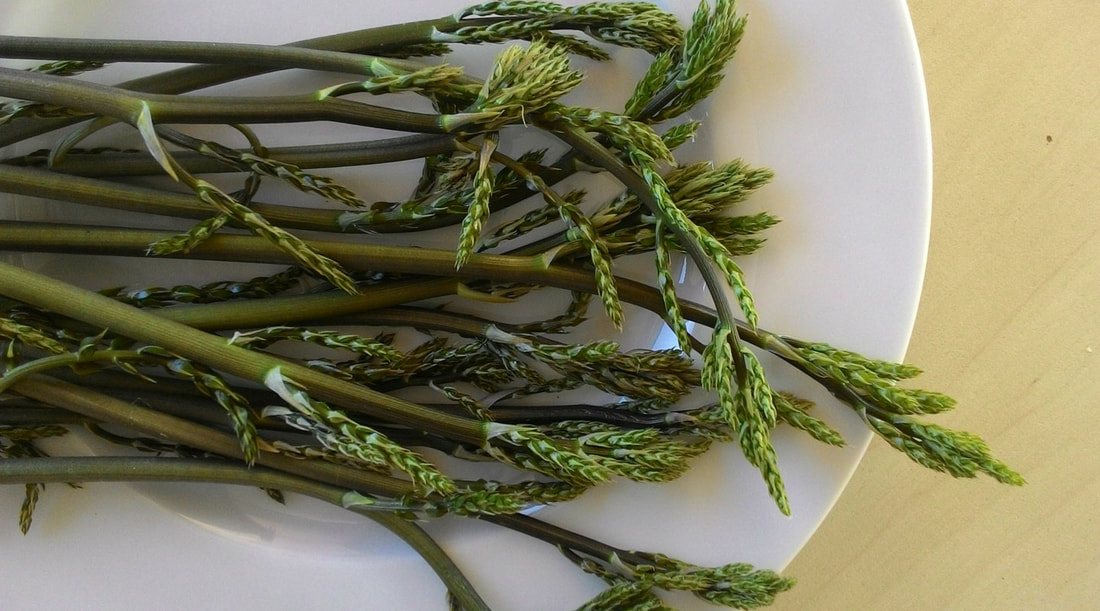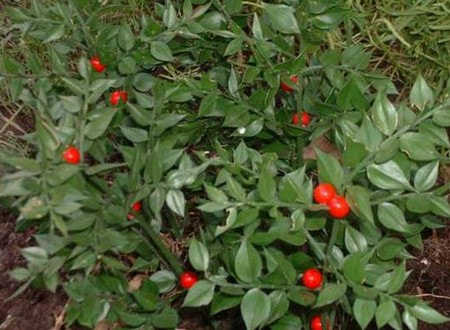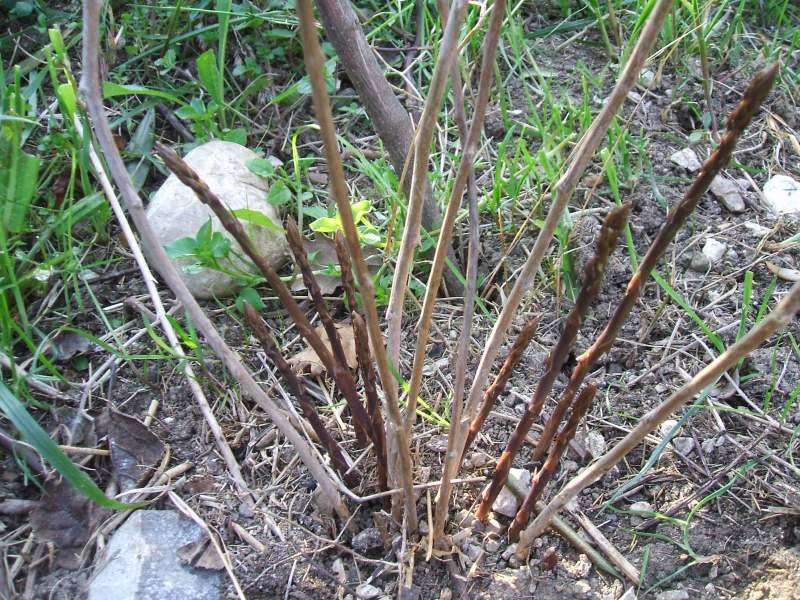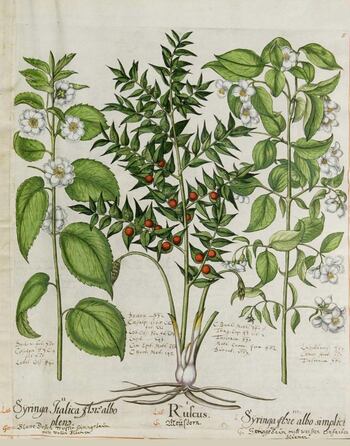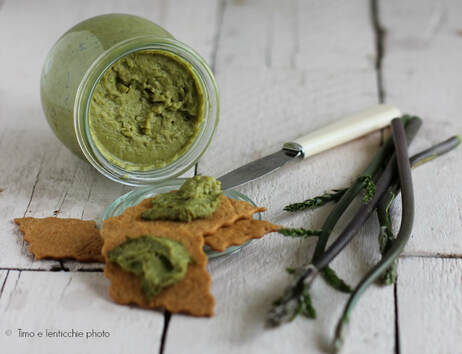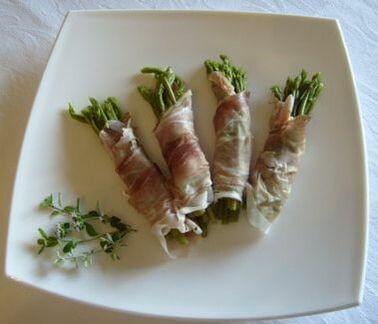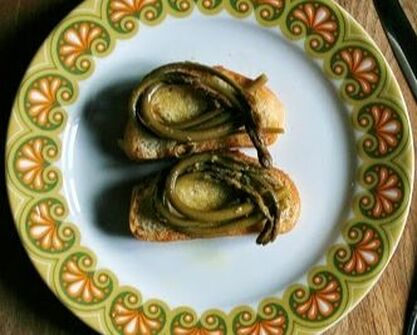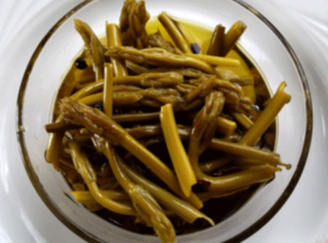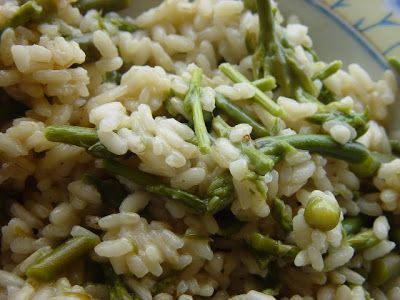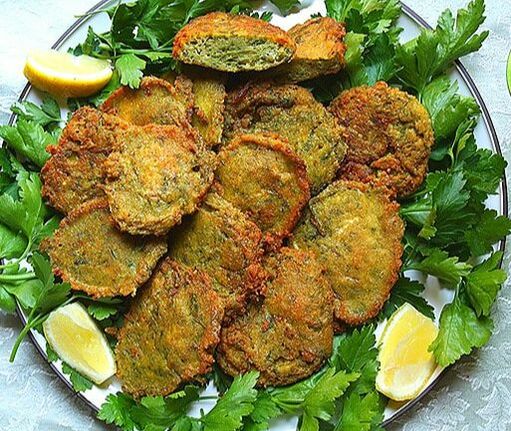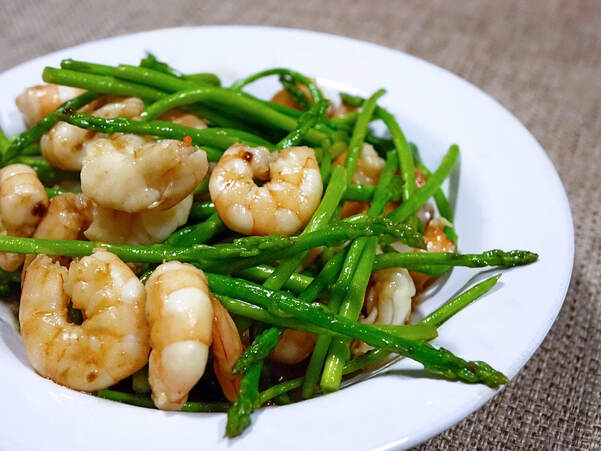|
Pungitopo (also known as Butcher's Broom) might be a popular plant for use in natural healing remedies, but it is often found while hiking in the mountains of Italy for use in local, traditional Italian recipes. Pungitopo tends to grow wild as an evergreen bush (looking like a short, bushy holly) with asparagus-like sprouts in fall. It is gathered in bunches about 12" tall and used in la cucina in the same was as asparagus. Tied with string and steamed until tender, it's often eaten as a side dish or wrapped in prosciutto, The sprouts, called ruscli (rusculins in English) are the tenderest part. Pungitopo is actually a member of the lily family closely related to asparagus botanically speaking. It and was once used in Europe make small brooms to clean butchers' chopping blocks. It's scent had the ability deter rodents from taking an interest in meats hanging to cure. The plant is well known throughout Italy, Europe and to the British Isles. Other common names are jew’s myrtle, sweet broom, kneeholy, pettigree, knee holly, kneeholm. In Italy, they will also be known as asparagi selvatici (wild asparagus) or portafortuna natalizio (Christmas Luck), referring to the time of year it is usually enjoyed in the Italian kitchen. It is mostly harvested nowadays for its thick, brown rhizome, which is harvested in the fall when the plant stores most of its energy for winter. It's herbal use is to make healing teas. There use can be as simple as boiling or steaming and served with butter or olive oil, the was asparagus are served. The softer buds are used in fritatta, frittella (fritters), risotto or in pasta dishes. Their taste is bitter but the buds alone are a bit sweeter. Here are a few ideas...
--GVI |
Archives
May 2024
Categories
All
|

